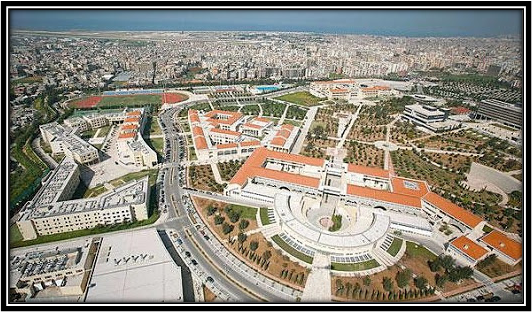11.4.6.Prioritize pedestrian access on campus

The Lebanese University provides free access to the campus and open and green spaces. The sports events organized by third parties are hosted in the LU campus.
Encouraging people to walk and use public transport can be a beneficial approach to tackle social and environmental issues associated with traffic and transportation. To motivate walking as a mode of choice of people, policymakers need to accord importance to pedestrians’ needs and expectations. Developing countries like India are lacking proper design guidelines for safer pedestrian infrastructure. With this background, it is essential to understand the concept of pedestrian needs for a safe and comfortable walking environment in Indian cities and provide a framework for planners to develop proper design guidelines for pedestrian infrastructures. The present study enhances the comprehension of decision-making process of pedestrians using Analytical Hierarchy Process to acquire priorities for various criteria that affects pedestrians’ choice of walking. A questionnaire survey was conducted in ten zones of Thiruvananthapuram city (Kerala, India) to recognize pedestrian priorities for walking characteristics within four main criteria: ‘Safety,’ ‘Security,’ ‘Comfort and Convenience’ and ‘Mobility and Infrastructure’ identified based on literature review. The study found that pedestrians perceived ‘Safety’ as the most important factor than conventionally used pedestrian infrastructure design factor ‘Mobility and Infrastructure.’ This paper also found a possible approach to quantify the importance of qualitative attributes that are applicable to pedestrian decision process. The findings of this study highlighted the importance of pedestrian-oriented assessment in better understanding of their decision-making process. These results will help urban planners and experts to rank the attributes defining the hierarchy of pedestrian needs and allocating investments into pedestrian facilities based on the needs and expectations of pedestrians.
Lebanon Cities’ Public Spaces
In Lebanon, the social connections are undeniable and crucial. However, meeting places remain private such as houses, restaurants, malls, and beach resorts. This is mainly due to the shortage of public spaces in Lebanon resulting from lack of planning, regulations and awareness around the right to the city and the importance of public spaces. In main cities where land prices are so expensive, common practice has prioritized the use of land in real estate development, thus trumping other uses such as public and communal spaces.In the late 1990s, Lebanon saw the emergence of malls, which have arguably acted as alternatives to public spaces. Malls, with their wealth of food courts, restaurants, cinemas, and play areas, have become the new downtown for a portion of the Lebanese population. They are also considered safe, which is another important factor.In 2015, the percentage of green spaces in Lebanon has decreased to less than 13%. While the World Health Organization (WHO) recommends a minimum of 9m2 of green space per capita (UN-HABITAT, 2016), Beirut has only 0.8m2.
